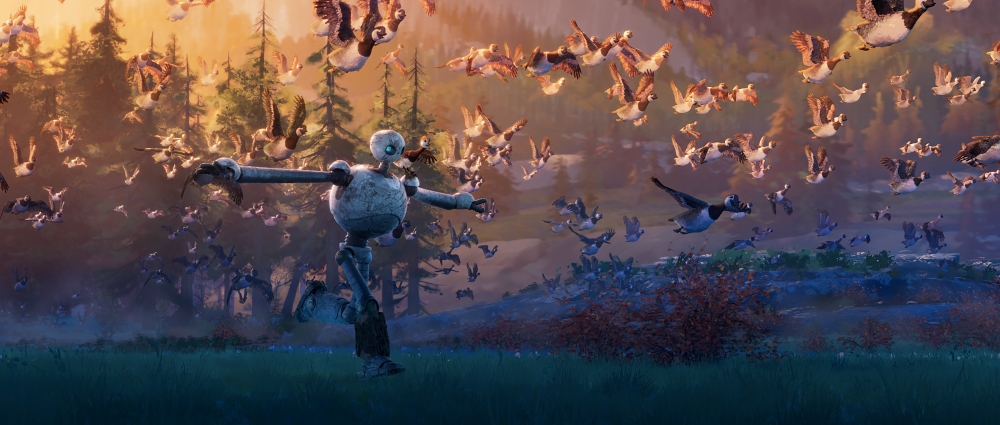|
Getting your Trinity Audio player ready...
|
[adrotate banner=”1179″]
Veteran writer and director Chris Sanders was fired up to adapt Peter Brown’s young adult novel The Wild Robot for DreamWorks Animation. But he felt the movie needed to look as different as the story felt to him when he first read it.
“Early on, we had some beautiful development art, these loose paintings that were explorations of different places in the story, and I was so enamored [with] the looseness and the impressionistic vibe of these exploratory paintings that I approached Raymond Zibach, our production designer, and I asked him, ‘How close to this can the final film look? Could the final film be indiscernible from these development sketches?’ And he said, ‘I’ll see what I can do,’” says Sanders, co-director of such hits as Lilo & Stitch and How to Train Your Dragon (both with Dean DeBlois) and The Croods (with Kirk DeMicco).
‘I think we reconnected with something that we lost connection with so long ago, and I think that The Wild Robot is nothing but strengths.’
— Director Chris Sanders
“There came a day — and I’m not making this up — that I was sitting in color dailies, and I was looking at what I thought was yet another of those development paintings, and someone pushed a button and it began to move … And I had a moment of panic. I thought, ‘Have we gone too far?’ It was a radically new look,” he says. “But the moment that I saw the matching characters fused with that background and saw the acting and saw the whole thing as a completed scene, I realized, no, it’s quite the opposite. We have achieved something groundbreaking.”
Audiences will get to judge for themselves when The Wild Robot arrives in theaters September 27. Sanders wrote and directed the adaptation, which stars Lupita Nyong’o as the voice of Roz, a robot whose crate is lost in shipping and crashes against the craggy shore of a wooded island.
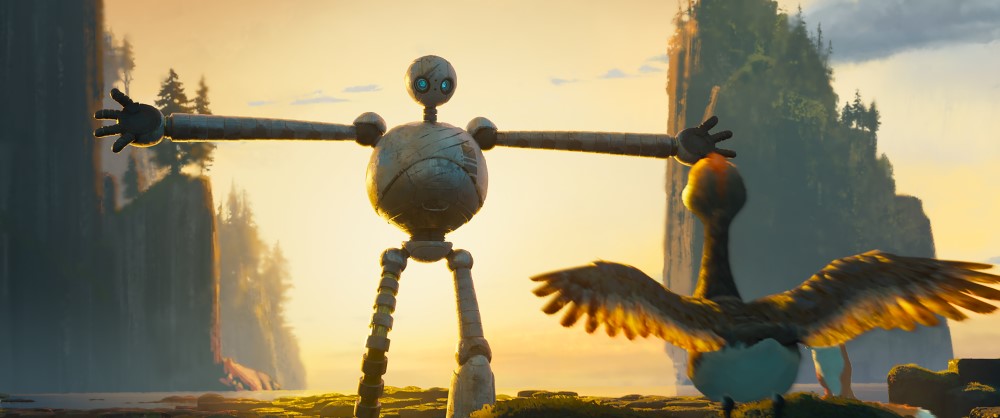
Flight Instructions
Far from any human contact, Roz’s programming prompts her to adapt to the natural environment, and she finds a mission that fulfills her programming parameters when a goose egg hatches in her hand, revealing a small and weak gosling named Brightbill, voiced by Kit Connor. Roz takes on the challenge of helping Brightbill grow strong enough to eat and swim and learn to fly well to migrate with his flock.
With help from a fox named Fink, voiced by Pedro Pascal, and a possum named Pinktail, played by Catherine O’Hara, Roz raises Brightbill only to face the uncertain future of returning to the factory where she was made.
Sanders says he connected with the story because it’s open, has strong emotions and has fully realized characters while avoiding unnecessary complexities.
“This one had a simpler arc to it that I thought would be perfect for the kind of resonance that I was feeling when I read it,” he says. “[The characters] exist more in a gray zone; they’re not really heroes, nor are they villains. They are characters in difficult situations where they need to grow and change in order to triumph wherever they are.”
‘It was about figuring out what Roz’s larger journey was and how we could to create the conflict and the emotion that we need from start to finish.’
— Head of story Heidi Jo Gilbert
Sanders says the visuals were essential to the development of the project, and he was encouraged that DreamWorks had stepped away from traditional CG animation toward a more artistic look in its recent features, The Bad Guys and Puss in Boots: The Last Wish.
“For me, it was necessary that we have a sophisticated look because the nature of the story — a robot in the wilderness amongst animals — could play way, way, way too young, and it is not a young story,” he says. “Visually, it is critical that people see this and instantly understand that this is something different.”
Painterly Vision
The Wild Robot delivers on that promise, rendering Roz and the natural world around her in impressionistic tones with painterly light and soft edges. The environments, he says, were created without geometries and were completely hand-painted. In fact, every character and surface in the movie is hand-painted, except for Roz when she first arrives on the island at the start of the film.
“[Roz] has a CG surface like we’re used to in the very beginning, and as she progresses through the film, that surface is now being replaced with brush strokes because she’s getting dented and scratched and she’s getting mildew and she’s getting a patina, and she’s beginning to belong to the island,” Sanders says. “I believe we have upward of 30 different versions of Roz.”
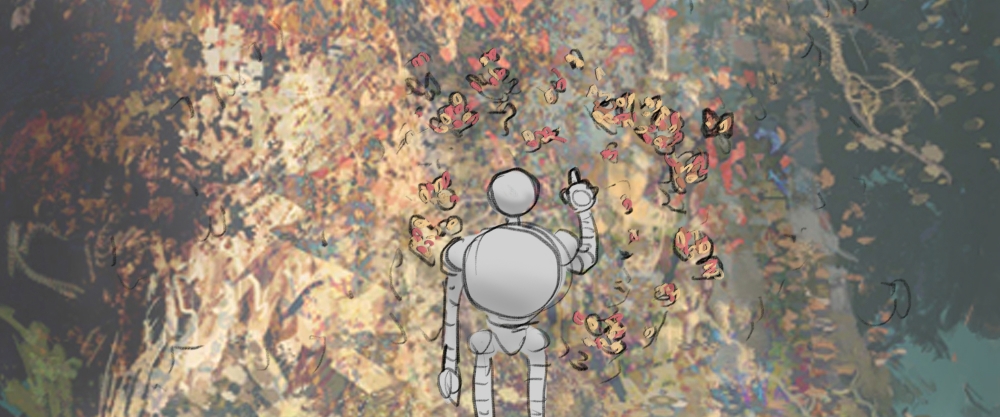
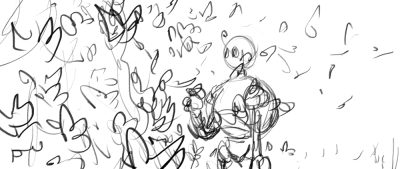 Roz was a challenging character to assemble, with inspiration coming from multiple sources. The movie retained the simple silhouette of the illustrations in Brown’s novel, but her design and how she moves were developed hand in hand, says Jakob Hjort Jensen, head of character animation. Although it was initially thought a humanoid rig could work, the story called for her to do things like mimicking animals, and a more bespoke rig was required, Jensen says.
Roz was a challenging character to assemble, with inspiration coming from multiple sources. The movie retained the simple silhouette of the illustrations in Brown’s novel, but her design and how she moves were developed hand in hand, says Jakob Hjort Jensen, head of character animation. Although it was initially thought a humanoid rig could work, the story called for her to do things like mimicking animals, and a more bespoke rig was required, Jensen says.
“Even before we had a rig and even a final model, I did some storyboard explorations just to figure out, ‘Could this design do that?’” Jensen says. “And true enough, it probably could, so we gave that to the rigging department, and they totally killed it. It’s amazing.”
Inspired by the Silent Masters
Roz also has no mouth or moving facial features. To convey her evolving emotions, the animators studied such masters of pantomime as Buster Keaton, the stone-faced star of Hollywood’s silent era. That was complemented by glowing LED lights on her body and head that pulse and change color to reflect her emotion and lenses for eyes that hint at deeper thoughts.
Underneath it all was Oscar winner Nyong’o’s subtle and confident voice performance. “Lupita worked so hard to find that voice — that was not just out of the gate,” Sanders says. “She worked very hard to develop the Roz that we hear and did multiple passes at every scene, because we would iterate.”
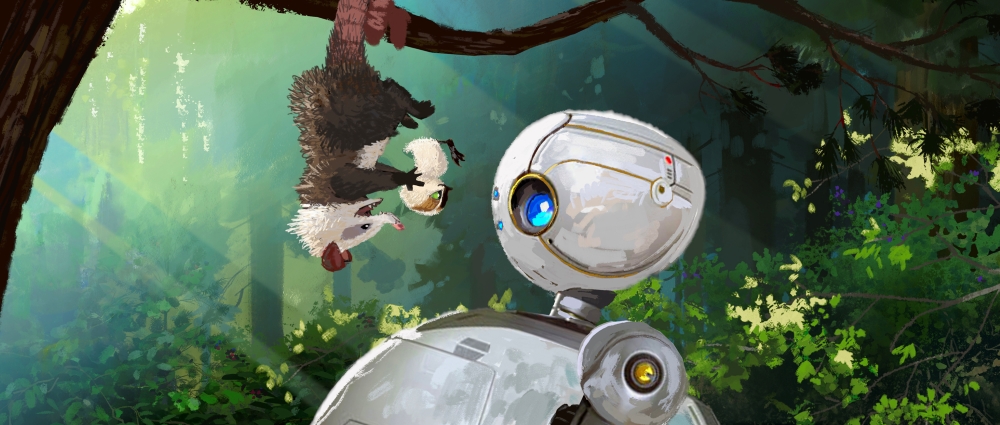
The story itself required several iterations. Sanders’ early drafts followed the book’s episodic nature, which required some reworking to make it work for the screen. “It was very true to the book, but I feel like we weren’t getting a true three-act structure where we built to a climax and paid it off,” says Heidi Jo Gilbert, head of story. “To me, it was kind of figuring out what is Roz’s larger journey, and how can we add, how can we shape the world around her to create the conflict and the emotion that we need from start to finish?”
Gilbert says the answer came from isolating Roz and making things less convenient for her — making her figure out more on her own. Her tasks of helping Brightbill eat, swim and fly are achievable tasks that, in the end, don’t satisfy Roz the way she expects, and those emotions set up her motivation for the rest of the movie. “I feel like once we narrowed in on that journey, it wasn’t stopping and starting — it was threading that right through the whole film.”
One aspect of the story that snuck up on Sanders was Roz’s role as a mother figure. “Frankly, I didn’t even realize it until I was talking to someone very recently, and they mentioned this is a predominant thing in animated films where mothers are missing,” he says. “And oddly enough … that may have been a factor that I wasn’t even conscious of when I said I wanted to work on it, but it’s certainly something that I latched onto in the story.”
The animal characters stand out from other animated features in that they don’t wear pants or have jobs — instead, they move like animals. Zibach says their performances are anthropomorphized only from the head up.
“There’s just enough, to me, stylization of the proportions that they feel like unique characters, but they give you the impression of what a real [animal] is,” Zibach says. “That word, impressionism, is really what drove everything — does it still feel like the right thing when we’re done?”
Zibach says the island was inspired by real places such as Olympia National Park in Washington state. “My early drawings were of the cave and the coast that she first wakes up on, and then views of the of the island itself, and it was really trying to find an iconic shape to the island, which, like I said, you don’t really get to see.”
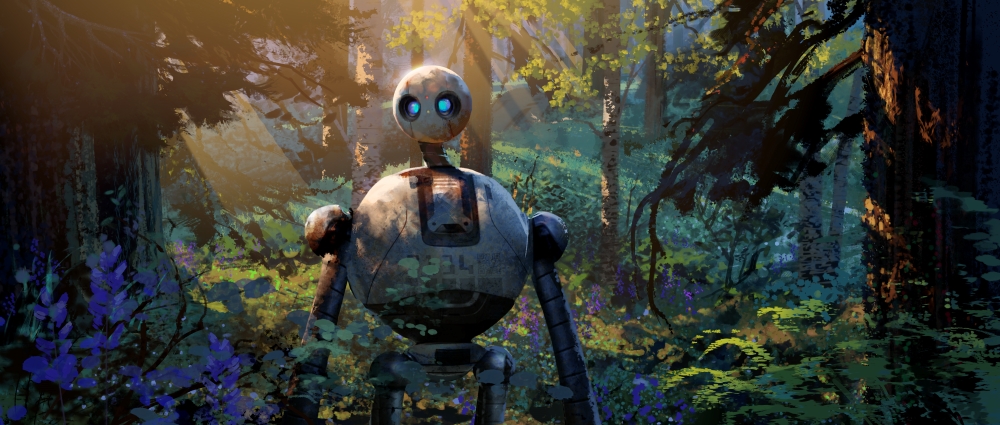
In contrast, the futuristic world Roz comes from rejects the common postapocalyptic aesthetic for an optimistic view more familiar to the golden age of science fiction. “Syd Mead was designing the heck out of everything, and everything looked great — it looked so optimistic,” Zibach says. “And that seemed like a great future world for her to come from and then plop her in the middle of a rugged Island.”
Producer Jeff Hermann says the cast and crew were resilient, starting work during the COVID-19 pandemic and then navigating strikes by the Writers Guild and the Screen Actors Guild. “The writers’ strike didn’t affect us much, but the actors’ strike certainly did,” he says. “There was a six-month window where we couldn’t record our actors, and we were right in the thick of production and had our full animation team on.”
Revved Up by Roz
This created a high level of excitement, with demand to work on the feature at DreamWorks.
“So animating Roz and animating the animals in this film was an utterly unique experience for the animators,” he says. “They were so excited that I went to animation dailies to launch scenes and several times the animator interrupted me as I began to describe the scene, and he said, ‘Actually, I already animated it.’ And I said, ‘Wait, what?’ That speaks to how excited everyone was and how motivated everybody was on this project.”
The final result has audiences excited too, with successful promotion stops at Annecy and Comic-Con.
Sanders sees the movie as bringing animation full circle, restoring the artistry of hand-drawn features with the potential and innovation of CG. “I think we reconnected with something that we lost connection with so long ago,” he says. “And I think that The Wild Robot is nothing but strengths.”
Universal Pictures will release DreamWorks Animation’s The Wild Robot in theaters nationwide on September 27.




![The Wild Robot_storyboard_10E58_butterflies_Cluster_Daniel_5E_BG_4B17 The Wild Robot story art [courtesy of DreamWorks Animation]](https://www.beta.animationmagazine.net/wordpress/wp-content/uploads/The-Wild-Robot_storyboard_10E58_butterflies_Cluster_Daniel_5E_BG_4B17-696x285.jpg)
![Chris Sanders [c/o DreamWorks Animation]](https://www.beta.animationmagazine.net/wordpress/wp-content/uploads/Chris_Sanders_2230rt-1-240x240.jpg)
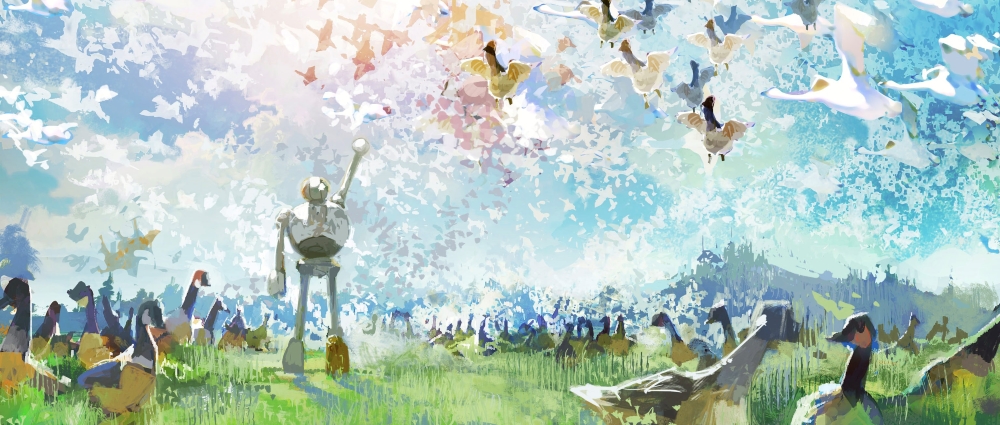
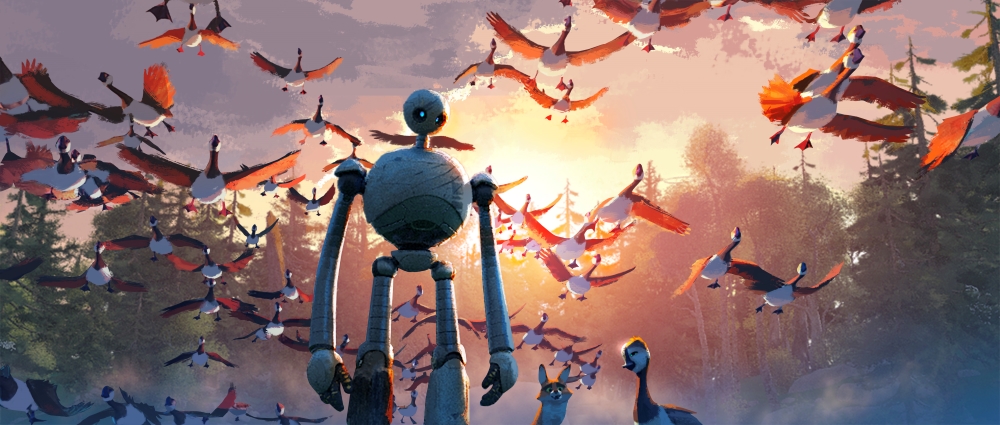
![Heidi Jo Gilbert [c/o DreamWorks Animation]](https://www.beta.animationmagazine.net/wordpress/wp-content/uploads/Heidi-Jo-Gilbert-240x240.jpg)
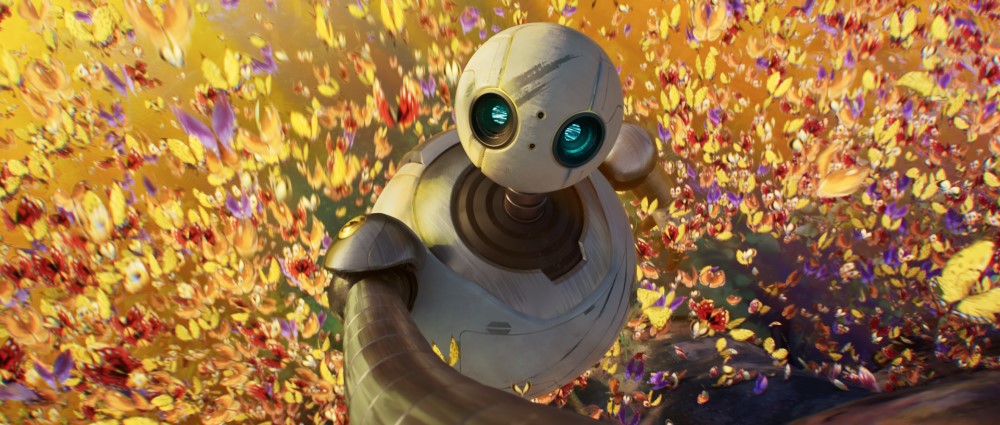
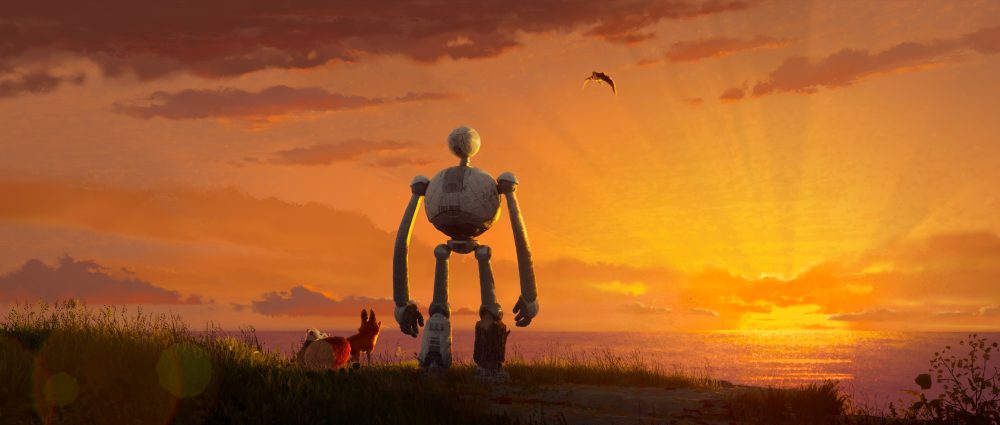
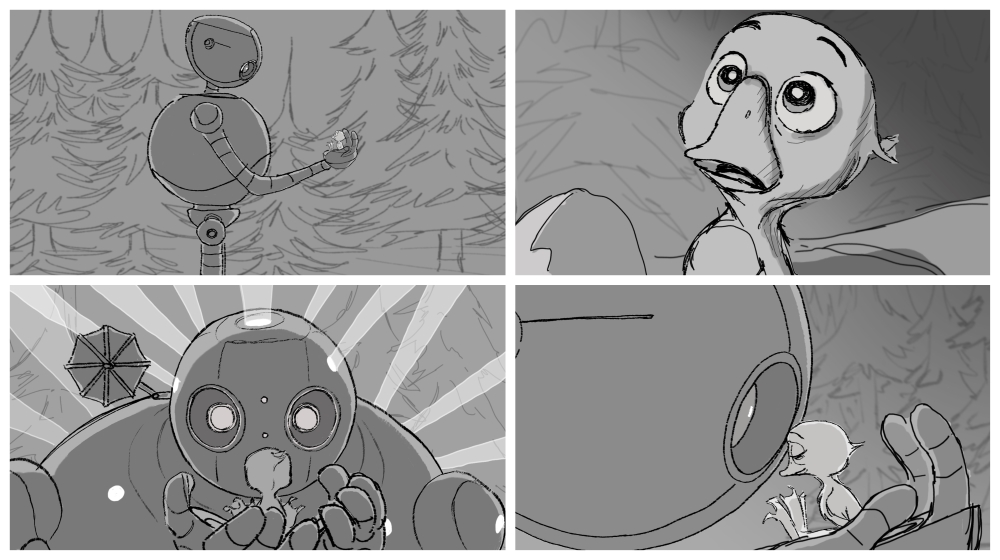
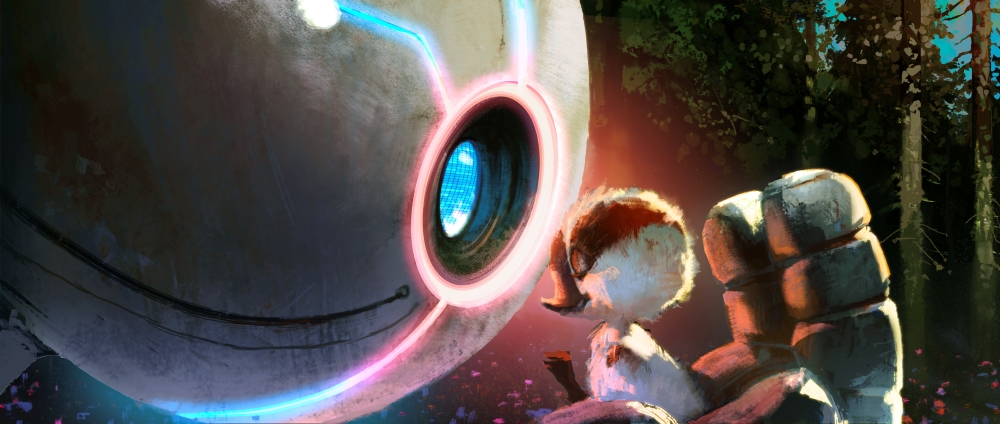
![Raymond Zibach [c/o DreamWorks Animation]](https://www.beta.animationmagazine.net/wordpress/wp-content/uploads/Raymond-Zibach-240x240.jpg)
![Jakob Jensen [c/o DreamWorks Animation]](https://www.beta.animationmagazine.net/wordpress/wp-content/uploads/Jakob-Jensen-240x240.jpg)
![Jeff Hermann [c/o DreamWorks Animation]](https://www.beta.animationmagazine.net/wordpress/wp-content/uploads/Jeff_Hermann_2501rt-240x240.jpg)
